If you’re interested to know the maximum tire size and rim combo for your stock Jeep without a lift then this article is for you. Let’s face it, big tire upgrades immediately improve the aesthetics while improving offroad capability at the same time. It also adds an extra level of ruggedness to an already capable, tough-looking 4WD such as the Wrangler platform. So let’s see what the largest tire size is for a stock Jeep Wrangler.
What are the biggest tires you can fit on a stock JK and JL Wrangler? The biggest diameter tire you can fit on a Jeep Wrangler with a stock suspension is 33 inches. The common 33-inch tire sizes are any of the following:
Determining the largest tire size for your Jeep Wrangler is also governed by what you intend on doing with your Jeep. For off-road applications, the 33-inch tire will be too big for maximum articulation (flex) without any scrub on the body in stock form. However, for highway, mall-crawling, and the occasional gravel roads, 33-inch tires will suffice. Remember, we are referring strictly to stock suspension JK and JL platforms.
There are other factors to take into consideration when deciding on the max tire sizes. These include but are not limited to:
Let’s take a deeper look into the pros and cons of fitting bigger wheels to your Jeep and what you need to take into consideration before you proceed with the tire upgrade.
Table of Contents
So being a Jeep owner, you are probably aware that not all Jeeps are created equal. This is a major consideration when determining a big tire upgrade on your Jeep. The tire that will easily fit on a stock Jeep Rubicon might not necessarily fit as snugly on a TJ or JL model.
This is a major consideration when determining a big tire upgrade on your Jeep. The tire that will easily fit on a stock Jeep Rubicon might not necessarily fit as snugly on a TJ or JL model.
Well, every Jeep, like most car models, is built for a specific application and each has its own strengths and weaknesses. So what might be a relatively straightforward fit for one model will require some minor or even major modifications to another. Manufacturers are constantly tweaking top-selling models to keep them on par with safety and emissions standards, so there are always variables between the years.
For example:The Wrangler JK is produced stock with various tire sizes depending on the model Wrangler you buy; Rubicon, Sahara, Sport, etc. The stock tire sizes are 255/75R17 (32″x10″), 225/75R16 (29″x9″), and 255/70R18 (32″x10″). Now the Rubicon, which was built for heavy-duty off-road applications even in stock form will easily be able to accommodate a bigger tire without much modification since the body and suspension are primed for off-road use and serious articulation.
If your intention is to run heavy off-road trails and rock crawling which will require maximum suspension articulation, ground clearance, and ride height, then the 33” tire on a stock suspension might not be the best option. You will be wise to upgrade your suspension first to accommodate the bigger wheels and allow for maximum flex through and over obstacles.
Also bear in mind, when venturing off-road you are advised to be well prepared. This involves carrying all the necessary safety and recovery equipment. You might even go so far as to start fitting protection to your Jeep in the form of steel off-road bumpers, roof racks to carry accessories, and recovery gear. Communication equipment and other essentials all add weight and before you know it the stock suspension load-carrying ability will be maxed out.
Hence, an upgraded suspension will allow you to not only increase your load-carrying capabilities but also stiffen up the ride for more off-road stability.
Watch them fit 35’s on a JL:
What is this backspacing all about?
The backspacing measurement is an important consideration in the fitment of a bigger wheel and tire to the vehicle.
Backspacing is described as the distance from the hub mounting surface to the inside lip of the wheel (measured in inches). Increased backspacing puts the tire closer to the center of the truck. Hence a rim with a closer to 0 or negative offset will sit further out and allow you to fit wider tires.
When you add bigger tires you are essentially increasing the center of gravity. What does that mean?
Well, we’ve all heard the saying, “what goes up, must come down” meaning the force of gravity pulls everything downwards.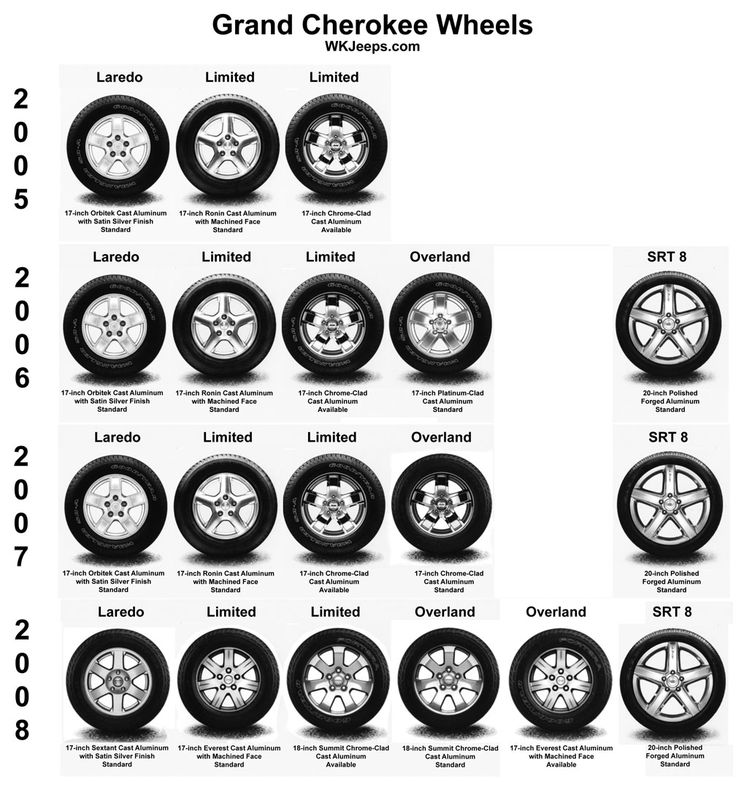 Gravity acts in complex ways and what that means for your 4WD is that a high center of gravity can make things turn and topple over, especially if they are high up and unbalanced.
Gravity acts in complex ways and what that means for your 4WD is that a high center of gravity can make things turn and topple over, especially if they are high up and unbalanced.
SO, with that being said, adding more height to your 4WD makes it more prone to toppling over, if you do not compensate with a wider tire and wheel with a more negative offset to decrease the backspacing to create more stability.
Adding wider rims and tires will make it handle a lot better off-road and look sexier too!!
Yes, as mentioned in the introduction, a 33-inch tire will do just fine if it’s purely for aesthetics and you never intend to do hard rocky trails. Yes, the 33inch will do just fine in that case where maximum articulation is not an issue.
So the Rubicon comes out stock with a 33-inch tire. This means you should be able to safely upgrade to a bigger tire without any dramas and still be well within the manufactures specs.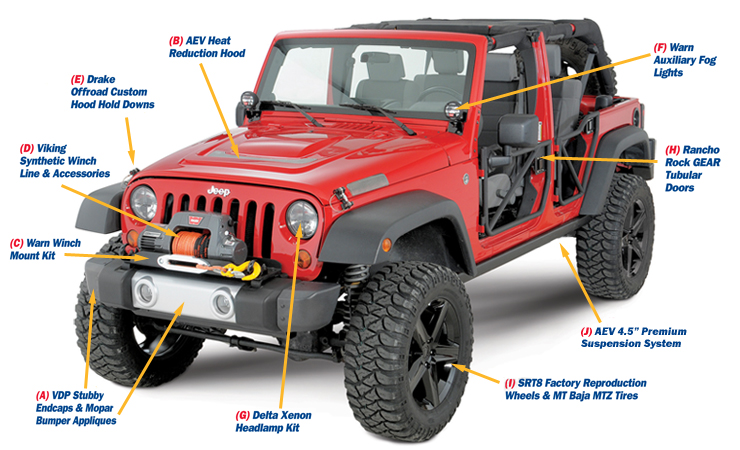 Your speedo should still be reading accurately and no strain on drivetrain components or transmission.
Your speedo should still be reading accurately and no strain on drivetrain components or transmission.
There are several Jeep Rubicon owners who fitted 315/70R17 tires and went “wheeling” disconnected with no rubbing or body scrub. Some have fitted 35/12.5R17 and rubbed off-road without disconnecting.
For those interested, here is a link where they fit 37-inch tires with minimum modifications, see below.
So as mentioned previously, it’s not only the wheel diameter that needs to be considered but also the wheel width, which is also affected by the offset of the rim. The backspacing comes into play again. The backspacing on stock JK wheels is 6.25″. Which means that the mounting surface of the wheel is 6.25” from the rear lip of the wheel
So you could, and many have fitted 33-inch tires on a stock JK, again depending on what the intended use was for, but there could be scrubbing against the fenders and inner wheel arch. Disconnecting the front sway bars most definitely results in some scrub against the body.
Disconnecting the front sway bars most definitely results in some scrub against the body.
So, if you want to fit a larger but not wider tire on the stock suspension and still have no issues off-road and achieve full flex without scrubbing you are pretty much limited to 255/80/17. This is basically the same width as the stock JK tire but with a higher sidewall. This will also give you increased ground clearance since your Jeep will be sitting higher off the ground and improved clearance on the diffs and lower hanging components.
The bottom line here is if you fit tires much wider than the 11” tire on stock wheels, your chances of making contact with your rear sway bar end link are high. Here fitting wheel spacers will rectify this issue.
The biggest tire you can fit on a stock Jeep Wrangler TJ is a 31×10.50. That is on a stock suspension and stock wheels and no other modifications. With this size, you can run comfortably off-road without causing any damage even during full articulation.
In the event there is some body scrub at full lock, simply adding a few washers on the steering stops can rectify this.
If aesthetics is what you are after and have no intention of going off-road then you could squeeze up to 33 inches on the stock JK. However, you will not be able to venture off-road without a lift.
Rubicon Express 2.5″ Suspension Lift Kit – RE7141
TeraFlex Body Lift Kit – 4152100
General Tire 33×10.50R15LT Tire, Grabber X3 – 4506840000
Rugged Ridge Wheel Spacers – 15201.12
Fit 37’s with the least modifications
We know Jeeps are very versatile vehicles and the extent of your modifications runs as deep as your pocket allows. So basically you can get away with a lot with Wranglers since they are the perfect platform for modification and upgrades. It’s just how they were built
Also, before carrying out any tire upgrade to your Jeep, ask yourself what your intended purpose is with the vehicle since this answer will allow you to either fit larger tires or limit you without any additional suspension mods first. If you follow the guidelines above and you should be safe.
If you follow the guidelines above and you should be safe.
Reference
Photography By:
Stellantis
by Kyle Buchter
Torque Correspondent
A Jeep was made to grow. At least, that’s what many of us tell ourselves when we gaze over the vehicle as its sits quietly in a driveway or parking lot.
It is the natural evolution of things. An order or mantra that just seems right. And whether that means bigger bumpers, beefier suspension components, or larger tires, this growth often goes hand-in-hand as an owner’s skill level or off-road progression increases.
Because, after all, bigger is always better, right?
Well, that depends.
Today’s Jeep Wrangler vehicles typically come from the factory with a 31- to 35-inch tire. Most editions are ideal for street use and serve their daily-driving purpose well, staying on the Jeep until all worn out some 50- to 60-thousand miles down the road. Then, an owner may look for a larger replacement.
For others, those smaller road-use factory tires are one of the first things to be pulled off the Jeep.
If you fall somewhere in between, or are trying to figure out just what bigger tires can do for your Jeep, well, you’ve come to the right place.
So why would you want bigger tires?
The first reason is for the look. Most Jeeps just look better with a beefier tire. The second reason is for better off-road ground clearance. If you have ever taken your stock Jeep off-road then you will understand because the undercarriage seems to catch a lot of things.
Lift kits do raise the undercarriage, but larger tires raise the axles. Is this absolutely needed? Usually, but it also depends on how you drive. Some drivers are really good at visualizing where all the parts of the undercarriage and axles sit when traversing obstacles, and can pick great lines to help overcome with smaller tires. Many others simply like the peace of mind of having a larger tire to float across the surface of the obstacles with less focus needed on taking the perfect line. It’s all in how you drive.
Is this absolutely needed? Usually, but it also depends on how you drive. Some drivers are really good at visualizing where all the parts of the undercarriage and axles sit when traversing obstacles, and can pick great lines to help overcome with smaller tires. Many others simply like the peace of mind of having a larger tire to float across the surface of the obstacles with less focus needed on taking the perfect line. It’s all in how you drive.
What is involved with stepping up a tire size or two?
First thing depends on the vehicle’s drivetrain. Stuff like axles, engine, transmission, suspension, brakes, gearing, driveshafts, transfer case, shocks, wheels, fenders and even local laws come into play. You need to figure out whether your Jeep can really handle bigger tires and that extra weight, or if you will need other upgrades to make the whole thing work. And that normally can be determined by how you drive the vehicle.
If it is a daily driver that will probably never leave the pavement, then you can get away with less modifications when going to a larger tire. This is because the suspension does not travel as much as it does off-road. Therefore, the stresses are not as great just driving down the road. However, if you are building the Jeep to be an off-roader you will need to do the proper modifications to get a bigger tire to work.
This is because the suspension does not travel as much as it does off-road. Therefore, the stresses are not as great just driving down the road. However, if you are building the Jeep to be an off-roader you will need to do the proper modifications to get a bigger tire to work.
Depending on what model Jeep you own will also determine your tire size upgrade options.
Older Jeeps like CJ, YJ, TJ, and XJs for example, take a decent size lift just to run a size tire that now comes factory on JK or JL Rubicon Wranglers. For those newer versions, moving from stock to 35-inch tires mainly requires a small suspension lift and wheels, or wheel spacers to get the proper backspacing. Lift sizes usually depend on the brand of lift, tire size and what type of terrain you plan to drive.
For most, tire size progression usually goes from stock to 33-, 35- and 37-inch sizes, and then 40’s and above. Now, keep in mind upgrading tires is not a one way fits all process because every vehicle requires different set ups depending on the size.
Moving from stock to 35-inch tires usually requires a lift that at least to clears the tires on most older models in order for the vehicle to off road without the tire rubbing badly. Newer Wrangler JL owners should be able to fit those 35s without an issue, but JKs need at least a 2- to a 2.5-inch kit to comfortable use those larger tires off-road. TJs and older will probably need to investigate at least a 4-inch kit for that size tire.
Moving into 37-inch tires takes a lot more and I usually joke with people that it is going to run somewhere around $5000 to safely put those 37s on the vehicle (not counting the tire costs). My reasoning for that is because the factory gears, axles, brakes, ball joints, steering, etc. can all handle the extra weight and size of 35-inch tires tire for a reasonable amount of time as long as the Jeep is driven well.
However, the mass difference in moving to a 37-inch tire takes things just a little far for stock components. Can you get by with swapping those pieces out? Yes, but not really for an extended time — especially if it will be driving a lot more off-road. So figure that your Jeep will need those extra modifications eventually to make it drive well.
So figure that your Jeep will need those extra modifications eventually to make it drive well.
Then, for those looking at 40-inch tires, it takes even more to set the vehicle up for that size. The tire weight now really comes into play when driving and especially off-road. That heavier tire is constantly lifted up and down while driving off-road, which puts stress on nearly everything on the vehicle. Also, weight by tire brand is something to keep in mind also because some tires are just heavier than others even though they are the same overall size.
Additionally, the tire aspect ratio (for example 315/75/R17) can be evaluated to reduce a tire’s weight by changing an aspect of a tire that really fits the look you want. This way, you can get the exact tire that works best with the build without the heavier weight because bigger is not always better.
So can you get away with adding a bigger tire on your Jeep? Yes, but remember the other modifications you will eventually need depending on the tire size you want and the activities you desire.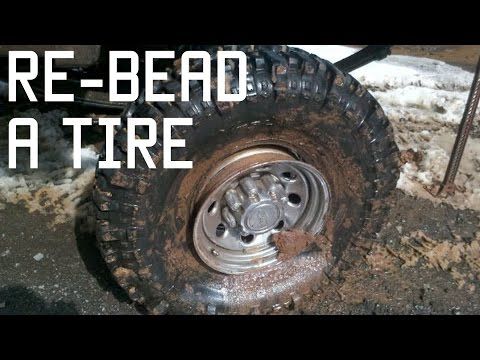
Ideally, you really should get a good feel on how your Jeep performs with its current tires. And then understand that while swapping into 33s, 35s, or 37s only adds about an inch of ground clearance per size, it definitely changes how the tire fits into the fender well and what it makes contact with as it goes through its cycles.
How To Enjoy Jeep Winter Driving
Choosing The Best Jeep Tires
How Do I Know When My Jeep Needs New Tires?
Tags:
Kyle Buchter
Rough Country 3.5" Lift Kit for Jeep Gladiator JT with N3, V2 or Vertex Adjustable Shocks
How To Use A Jeep's Four Wheel Drive
Not all road or trail conditions can be tackled with two-wheel drive. So knowing all about your vehicle's four-wheel-drive settings, and which is best to use in certain situations, is definitely helpful.
READ MORE
Tactik Cup Holder Phone Mount
Best Jeep Gifts For 2022: Part Two
Part Two of Two — Popular categories and products for any enthusiast on your holiday gift list.
READ MORE
How To Put Bigger Tires On Your Jeep
If you have your eye on some larger tires for your vehicle, here is what you need to know.
READ MORE
Quadratec QRC Side Armor with Step for Jeep Wrangler JL & Gladiator JT
Best Jeep Gifts For 2022
Part One of Two — Popular categories and products for any enthusiast on your holiday gift list.
READ MORE
Are Jeeps Good In The Snow?
Rugged and capable in most situations, do these skills translate to snow driving for a Jeep as well?
READ MORE
Nine Things You Need In Your Jeep This Winter
A good winter emergency kit is always a good idea to pack in the vehicle. Because you never know when something may happen.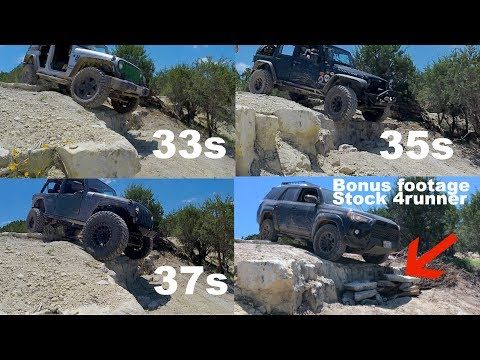
READ MORE
Many motorists ask a similar question, but not everyone decides to deviate from the manufacturer's recommendations.
Replacing regular car wheels is one of the simplest types of tuning. Why is this needed? There are many options. The most common reason is not liking the look. Let's say you want the wheels to look spectacular. To do this, the disk must be larger in diameter. Well, or you bought a used car, and the design of the rims absolutely does not suit you. Perhaps you liked some specific wheels, but their dimension is not included in the list recommended by the car manufacturer. You can also change wheels based on practicality. But how can the installation of such wheels turn out in the future? Let's figure it out.
First, let's remember the key parameters of the wheel.
The main dimensions of the tire: D is the outer diameter of the tire; H is the height of the tire profile; B - tire profile width; d is the diameter of the wheel rim (tire).
The main dimensions of the tire: D is the outer diameter of the tire; H is the height of the tire profile; B - tire profile width; d is the diameter of the wheel rim (tire).
Related materials
The traffic police prescribed requirements for converted cars
Next, we will tell the story on the example of tires for a very common size on B-class cars 185/65 R15. These are the popular Rio, Solaris, Logan, Largus, etc. By the way, let me remind you what all these designations mean.
So, there are several ways to move away from the standard wheel size .
While maintaining the standard size of the rim, we increase the width of the tire profile while maintaining the percentage of height to width. In our example, we get 195/65 R15. It is important to know here that all cars are designed for the installation of snow chains with a size of at least 12 mm. Indeed, in some European countries, driving on mountain roads without chains is prohibited, and not a single self-respecting manufacturer will make a car so that it cannot be operated in the mountains of France or Switzerland. Therefore, an increase in the width of the tire profile is permissible in most cases by up to 24 mm. At the same time, the car will become a little softer on the go, and wider tires will improve braking performance.
Related materials
Wheel care: checking wheel and tire products
We leave the rim unchanged, and increase the percentage of tire profile height to width to 70.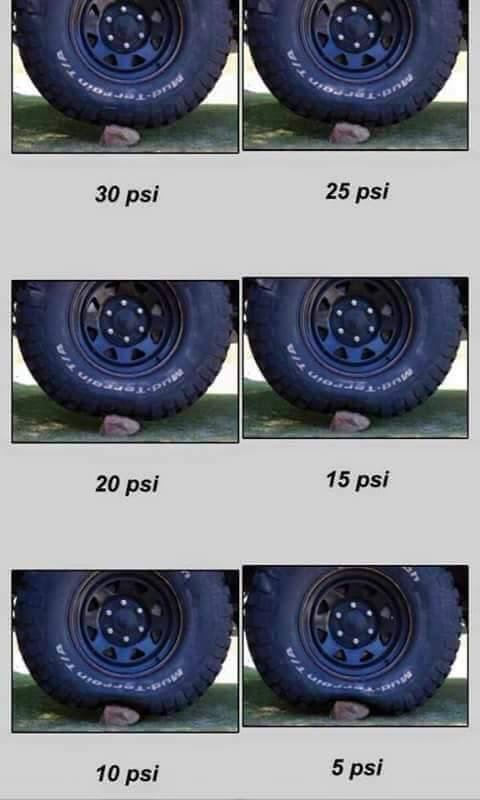 In our example, we get 185/70 R15. The outer diameter of the wheel increases by 20 mm, which is quite acceptable (remember the reserve for installing chains). Everything would be fine, but in our specific example, the factor intervenes that tires of this dimension are produced mainly for commercial vehicles and they are too rigid and expensive to install on a passenger car. However, in other dimensions, the situation may be different.
In our example, we get 185/70 R15. The outer diameter of the wheel increases by 20 mm, which is quite acceptable (remember the reserve for installing chains). Everything would be fine, but in our specific example, the factor intervenes that tires of this dimension are produced mainly for commercial vehicles and they are too rigid and expensive to install on a passenger car. However, in other dimensions, the situation may be different.
The story of a friend's car is quite revealing. He bought a Kia Rio with a 1.6 engine and a 6-speed automatic. The regular wheels of the car had a size of 185/65 R15. The owner drove through the summer season and was not happy with the rigid suspension of the car and insufficient ground clearance. Then he decided to change the behavior of the car, not by tuning the springs with shock absorbers, but by working with the wheels. In preparation for the next summer season, he used forged wheels with a diameter of 14 inches, which completely matched the mounting dimensions.
The previous generation Kia Rio was equipped with 15-inch wheels in the base, but to make the car softer, the owner installed 14-inch wheels with 195/70 R14 tires.
Kia Rio of the previous generation was equipped with 15-inch wheels in the base, but to make the car softer, the owner installed 14-inch wheels with 195/70 R14 tires.
Related materials
Tire test "Behind the wheel" - we measure the braking distance in heat and cold
There is noticeably more air between the rim and tire. The outer diameter of the wheel has also grown (by 9 mm). As a result, the smoothness of the ride has become fantastic. When overcoming road roughness, the car, which was not originally famous for its energy-intensive suspension, began to resemble cars of the log-shaped family, which are super-comfortable on Russian roads. Soft, quiet, smooth. All the problems of the dead Russian roads and the rigid Korean suspension have disappeared. He does not plan to drive, so he does not care about the possible deterioration in road holding at very high speeds.
All the problems of the dead Russian roads and the rigid Korean suspension have disappeared. He does not plan to drive, so he does not care about the possible deterioration in road holding at very high speeds.
However, disc diameter reduction is very rare. Much more often it happens that the owner chooses discs one or even two sizes larger. And "wraps" them in low-profile tires. At the same time, the overall dimensions of the wheel remain almost unchanged or grow within acceptable limits.
A typical low profile tire.
A typical example of a low profile tyre.
Related materials
Tire pressure: your norm
Looks spectacular, but first of all, smoothness suffers. Yes, and there are much more chances to damage a wheel on a bad road, because the lower the height of the tire profile, the less the ability of such a tire to withstand shock loads.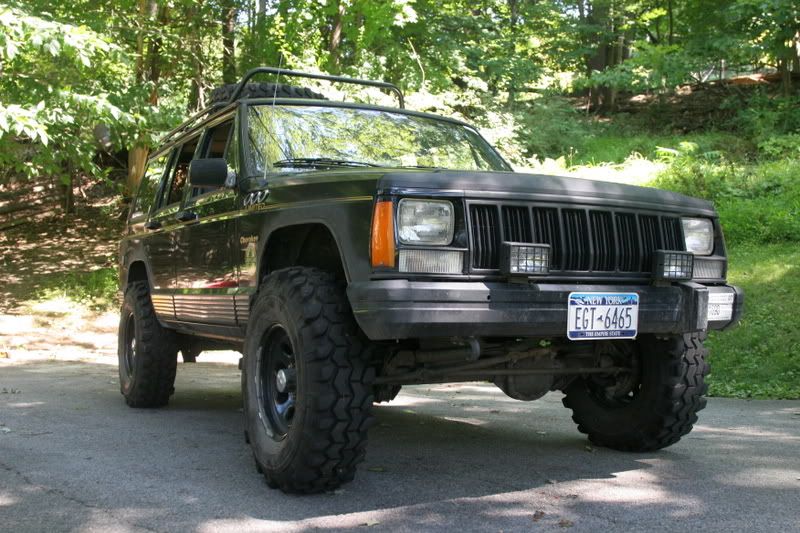 In everything you need to know the measure. Returning to our example, Rio and Solaris cars in expensive trim levels sport 16-inch wheels with 195/55 R16 tires. In this case, you can play a little with the sizes. For example, a 195/60 R16 tire will fit in the wheel well without any problems, since its outer diameter will increase by only 19mm. The clearance will grow by a decent 9.5 mm, but you can forget about the softness of the ride provided by the 15-inch wheels of the basic modification.
In everything you need to know the measure. Returning to our example, Rio and Solaris cars in expensive trim levels sport 16-inch wheels with 195/55 R16 tires. In this case, you can play a little with the sizes. For example, a 195/60 R16 tire will fit in the wheel well without any problems, since its outer diameter will increase by only 19mm. The clearance will grow by a decent 9.5 mm, but you can forget about the softness of the ride provided by the 15-inch wheels of the basic modification.
Another story when the owner of the car decides to install wider disks. Some people like it when the wheel protrudes a little beyond the arch. Please note that changing the dimensions of the wheel and tire can significantly increase the mass of the wheel assembly. Such weighting will negatively affect the life of the suspension elements and even the body, since large unsprung masses can cause resonant vibrations for which the suspension is not structurally designed. It is also important to remember such a parameter as wheel offset.
It is also important to remember such a parameter as wheel offset.
Wheel offset is the distance between the plane of symmetry of the rim and the surface adjacent to the vehicle hub. From left to right in the diagram are shown: negative overhang, zero overhang and positive overhang.
Wheel offset is the distance between the plane of symmetry of the rim and the surface adjacent to the vehicle hub. From left to right in the diagram are shown: negative overhang, zero overhang and positive overhang.
Those who like to change the offset of the rims, as a rule, tend to place the wheels wider. The aesthetic component of such changes is controversial, but the resource of the suspension elements will certainly decrease.
| It is, of course, possible to pull narrow and inexpensive tires onto rims that look more like solid pipe sections with flanges, but the deformation of the tire carcass will soon render it unusable. Of course, it is possible to pull narrow and inexpensive tires onto rims that look more like solid sections of pipes with flanges, but the deformation of the tire carcass will soon render it unusable. You don't run into many of these. | Even large crossovers, which, in comparison with sedans, seem to be a sort of bumpkins, when you install low-profile tires, they begin to manage at least “good”. Even large crossovers, which in comparison with sedans seem to be a sort of bumpkins, when you install low-profile tires, they begin to manage at least "good". | On the utility Sobol, a tuning enthusiast installed discs that significantly increased the track. Curious looks from others are guaranteed, as well as a reduced life of wheel bearings and shock absorbers. On the utilitarian Sobol, a tuning enthusiast installed discs that significantly increased the track. The wheel may touch body parts. If the width and diameter of the wheel grow no more than 24 mm from the maximum wheel size recommended by the manufacturer, then this problem is not terrible for you. Only after that you can’t put chains. |
| Economy improvement. Economy improves slightly on country roads, especially on vehicles with gearboxes that have few gears (4 or 5). | Vehicle roll increase. Yes, the roll will increase slightly, due to the fact that the center of mass is now slightly higher. In practice, this means a slightly lower maximum rearrangement speed. | |
| Change the speedometer and odometer. Standard instruments always overestimate the readings. You can check by GPS. And with new, slightly larger wheels, the readings will come in line with reality. | Derating. The new wheels are a little harder for the engine to turn, and they themselves are a little heavier. | |
| Reducing the offset of the discs (when the wheels protrude more out of the wheel arches) provides a wider track, which improves the lateral stability of the machine . | The wide disc is easily damaged by when touching a curbstone. In addition, if the width of the disk is much larger than the standard one, the tire carcass does not work correctly. This leads to increased tire wear . | |
| In most cases, looks more aesthetic and catchy. | Protruding wheels overload wheel bearings and make driving difficult . As soon as the front wheel hits an uneven road, the steering wheel literally pulls out of your hands. |
It is convenient to use a tire calculator for calculations.
Custom wheels are prohibited by law. Therefore, any experiments with the dimensions of tires or wheels are illegal. An exception is if the new dimension is allowed to be set by the manufacturer. However, in reality, not everything is so scary: if the rims on your small car are not boiled down to a width of 12 inches, if the diameter is not 19 or more inches, then such wheels will not arouse the interest of traffic police officers. But there will already be problems with obtaining a diagnostic card.
Boiled discs may be of interest to traffic police officers, because the use of such discs is a direct intervention in the design of the car, which is prohibited. In this case, you can try to convince the traffic cop that you "get to the place of repair with the necessary security measures."
Boiled discs may be of interest to traffic police officers, because the use of such discs is a direct intervention in the design of the car, which is prohibited. In this case, you can try to convince the traffic cop that you "get to the place of repair with the necessary security measures."
In this case, you can try to convince the traffic cop that you "get to the place of repair with the necessary security measures."
In conclusion, I invite you to share what changes in tire and rim sizes you have applied to your cars, and what you think it has resulted in.
What if you put bigger wheels? — examination ZR
What if we put bigger wheels? — examination ZR
Bus parameters
Many motorists sometimes wonder how many centimeters the height of the tires installed on their car is and whether it is possible to make the car taller with the help of them.
The tire height (profile) is easily calculated from the markings on the sidewall.
From this article you will learn:
For example, the marking 195\70\r15 (in the picture) means a tire width of 195 mm and a height of 70% of the width of 195 mm (136. 5 mm). R15 is the disc diameter in inches (1 inch equals 2.54 cm).
5 mm). R15 is the disc diameter in inches (1 inch equals 2.54 cm).
The total diameter of an automobile wheel is the sum of the rim diameter and the difference between the outer and landing diameters of the tire (profile). In our case, the diameter will be 15 x 2.54 + 2 x 13.65 = 65.4 cm.
The wheel diameter may decrease during operation due to tire tread wear. This must be remembered by owners of sports cars with very low ground clearance.
The tread height of a standard summer car tire is usually 7.5 to 8.5 mm, and a standard winter tire is 8.5 to 9.5 mm.
That is, if the car has been running on tires for the 3rd or 4th season - this means that the clearance under its bottom is already about 1 cm less than on new tires - and this is enough to with two riders in the back seat start striking the bottom of the speed bumps.
The vehicle's ground clearance can be significantly increased by the height of the tires the vehicle is running on.
For example, a car is running on 215\55\r15 tires that are 118mm high (55% of 215mm).
If the owner of the car, when changing tires, decides to put tires a little higher than the standard, for example 215 \ 60 \ r15, then the ground clearance of his car will increase by more than 1 cm due to the height of the tires, which will now be 129mm (60% of 215mm).
And if the car owner decides to seriously increase the ground clearance of his car, he can consider even larger tires, for example 215\65\r15 or even 225\65\r15, which will increase his ground clearance by more than 2 cm and 2.5 cm respectively.
In the lesson on increasing the ground clearance of a car due to tires, the main thing is not to get too carried away so that the wheels do not rub against the wheel arches of the car.
It must be remembered that even if the wheels fit without problems in the wheel arch, they can begin to rub against the arch when the car is fully loaded, or when the steering wheel is fully twisted.
The car owner must remember that the behavior of the car on the road depends greatly on the tires.
Higher tires change the center of gravity of the car - it moves up. Also, tires with a high profile are easier to "break" under the weight of the car.
These two factors can make the car more "rolly" in corners, which increases the likelihood of a rollover.
At the same time, high-profile tires are better at absorbing impacts and handling bumps in the road, making for a smoother, more comfortable ride.
So if the owner of the car is not satisfied with the too stiff suspension of the car, then he may well make it a little softer due to the higher profile of the tires.
Often, car owners install wider tires on their cars, thereby wanting to increase tire grip and, as a result, improve car handling.
These tires can actually improve the handling of the car, but this installation will have two side effects.
The first one is the increased width of the tires for better fuel consumption.
Second, wider tires can make a big difference in how your car behaves on the road. This is especially noticeable when driving along a rut, which often forms in the summer in the heat on highways.
The owner needs to be prepared for the constant "throw" of the machine to the right or left when driving at high speed.
There is a certain group of car owners who install tires of completely different sizes on their cars - higher and wider than those provided by the car manufacturer (jeep owners and motorists who have suburban areas with very bad roads do this) .
Drivers of cars with oversized tires need to be prepared for a completely different and somewhat unpredictable behavior of their car when driving on the roads.
Larger tire width improves grip and steering response.